#mandible = lower jaw bone
Explore tagged Tumblr posts
Text
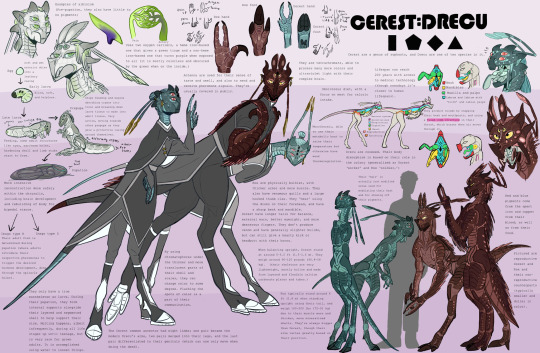
Oougghhhh I'm BACK, FINALLY !!
Anyway, say hello to the Drecu (Dorest and Rox), one of the two species in the genus of sophonts known as the Cerest (the other guys are coming up next, they're taller and considerably more violent than the average bug lizard) Here's the info I couldn't cram into the image:
This group is called Drecu, whereas the other type is called Sundyne (Seru is the name for Sundyne royalty/their idea of the best life form)
Dorest and Rox are both under the Drecu classification, and are more closely related to their common ancestor than the Sundyne.
They have very different appearances, but they are cosexed, with each individual having the capabilities of insemination and gestation.
Their dimorphism is based on what tasks they do in the colony, essentially splitting them between “”worker”” and “”soldier”” rather than male and female.
Rox are considerably larger, have thicker shells and scales, mildly venomous quills on their arms and back, and have a large thumb claw on their hands to aid in grappling and slicing.
The venom is released once the quill is detatched, as the separation causes a muscle around the sac at the quills base to spasm and send it out the tip.
It has little to no irritating effect on non-Cerest, but if one of their own is barbed it will cause localized numbness and pain/swelling elsewhere as the venom takes effect. Several quills in rapid succession has been known to be debilitating for Dorest.
They have more sensitive hearing gained through the large discs on their forehead that catch vibrations in the air. Their eyesight is worse, however, with two of their eyes being small and fixed on their forehead, mostly motion-based. Their mandibles are larger, sharper, and they sacrifice space for an ear canal in favor of more room for muscles to make the jaws as powerful as possible. When closed, the mandibles fold around the upper and lower beak to give the illusion of cheeks. Their palps fill in the gap between the bigger mandible and upper jaw, and are used to manipulate food. they also have two ‘teeth’ near the back of their mouth and throat that they vibrate their palps against and snap to speak (combined with another structure in their throat that sort of acts like vocal cords thatvtheybuse to make larger sounds).
The teeth also help them break apart hard foods like bone and other organisms exoskeleton.
Due to their larger body size/space for eggs, tendency to stay within their territory rather than forage elsewhere daily, and ability to defend themselves, Rox are often the ones who gets the eggs transferred to them for brief gestation.
Dorest are smaller, with longer legs and tail. They have stamina and speed, but aren’t really that strong, instead relying on their numbers to get things done. Their mandibles are weaker smaller, and duller but their palps are more developed and dexterous, and cover their mouth opening entirely. They speak in the same way as Rox, but they sound more high pitched.
It is unknown how naturally all of these very extremely different traits evolved since they have a storied history of genetic manipulation and experimentation on their populace (and a storied history if deleting that history from history)
Anyways as you can imagine their sex and gender can get pretty complicated. Due to how their units were originally structured (with social power coming from reproductive rights and number of children) and resulting current social reinforcement/emphasis on role division into the D and R binary , they dont actually recognize a 'neutral' or 'dual' identity despite being physically that way (similarly, trying to switch between or out of your literally assigned bio type and/or role is a big no) this is largely due to their newer Sundyne leaders, who Aren't unisex and want to put their version of the binary on everything.
For them, sex is who tops and who bottoms. They can't self fertilize but both have eggs n sperm, and would naturally both uhh transfer that, but instead their role decides who does what with what,for both population control and to conform to aforementioned mf binary that dont naturally have. Only one incubates at a time, pretty much. Dorest are usually the one who inseminates, giving the eggs over for a time, but they care for offspring once the eggs are laid/ hatch so the Rox is free again to go about their business.
The two have a power dynamic, of course. Dorest are seen as the givers, while are seen as takers, in a more powerful position. Idk I'll have to do a whole separate thing on it later.
They have a specific pronoun for each role in the unit (which can further be split into their individual rank/occupation)
For example, in the absence of a Rox, a Dorest could take up the matriarch/arch pronouns and start acting like one, and vice versa (though this is not taken seriously at All by their peers, and is even illegal in most cases)
Both have antennae that help them send and receive pheremone signals that also play into their communication. These signals typically convey more basic emotions and needs, but can have a very strong effect on the individual (for example, an extreme 'hurt' or 'scared' signal from another Drecu causes similar anxiety and stress to those around them, and may even trigger an attack response towards the source.) Their scales and areas under their shell are also full of chromatophores that they can color in specific areas and patterns to convey some words or emotions. Their eyes can pick up colors that ours can’t, so often these colors changes look very minute to us (or more muted than they actually are). The unique verbal and nonverbal signals they use make their languages hard to speak or even understand, since they can “say” something to you that you can’t see or smell. They have these nonvocal modes of communication because their vocal ability is pretty limited overall. When they do vocally speak, it sounds like a human but with a voice filter (and with lots more clicking and less resonation. They almost sound like robots with their voice coming from a broken speaker)
All Cerest go through several distinct life stages after hatching, beginning as small defenseless grub things. Once they accumulate enough stored fat, they sprout spindly blueprints of their legs and arms and start to move around more independently (these limbs and tail extensions will pretty much become their bones later) They will then continue to store energy until they go through a full metamorphosis .
The prepupa will become more active, running around to align the new limb sprouts it has and to start sucking up the rest of their organs into what was their throax region. At a certain time, they will join other prepupa in a communal chamber and incase themself into a chrysalis made from a layer of skin they grow around themselves.
They'll use their previous exoskeleton/limbs/ etc to form the more complex adult lattices of endo/exo skeleton and skin/muscles/organs that will allow them to grow larger and walk upright. This is also when their brain grows more and settles in, allowing for more complex thought.
When in the chrysalis, adults around them will ‘choose’ whether they will grow into a Dorest or Rox by introducing certain chemicals through the spiracles. This decision can be influenced by a variety of factors, including the politics of the family unit.
Once they emerge, they will grow more like a reptile/crab by shedding and molting parts of their scales and shell (often aided by hot water because they’re so big. Whether their ancestors were water based is unknown, since they have removed or altered their own evolutionary history so much that no one really knows).
Speaking of that, their adult body support system is a bit convoluted (thanks to them evolving from a purely exoskeletal species that nature never intended to get all that big)
Thankfully, it's a lot less heavy than it should because of its composition of lightweight and durable carbons (with some calcium carbonate thrown in there too).
They have plates that range from hard and thick to thin and flexible that make up a segmented outer shell that is present over all their body.
It is what they molt and is primarily used for muscle attachment in their limbs, but it mostly just covers the rest of their body elsewhere.
This is because they also have a disconnected internal tube and chamber system mainly in their head, tail, neck, and torso for more places for their muscles to attach to while maintaining that bipedal stance and organ placement.
They don’t/can’t replenish these through a molting process, and instead they’re maintained from the inside more like our bones.
The rest of their body grows and shrinks around them (though limited by the outer shell on top). Gaining fat or muscle on the arms and limbs has a limit due to the shell, but on the torso they can more easily do so thanks to a third main structural layer they have:
In between the shell and the internal structures, they have a thin skin/scales layer, which can be seen best joining the gaps between the hardest and most prominent parts of their outer shell as it covers the thinner plates underneath (some places on their abdomen, the underside of their tail, the front of their neck, and several places on their face. )
This is derived from the chrysalis layer that they grew, and when they emerge it softens and wraps them.
As it dries, it dies everywhere except the edges/gaps of the outer shell, where it stays somewhat vascularized as it attaches to the edges while the outer shell is still hardening .
This layer allows for fat storage under it and prevents everything from slipping out when they molt in areas where the outer shell isn’t actually attached to anything/ is not fully encapsulating on its own.
they shed this every so often after a new one grows from underneath to replenish it since the blood flow isn’t great. Molting becomes very infrequent after pupation, usually only happening perhaps 2-3 times (maybe 4 for Rox) in their teenage years until they stop growing. There isn't a particular age for this, since some can experience spurts later on or conversely were intentionally malnourished to stay s certain size, which is common among their under classes.
On that note, molting only happens as an adult due to extreme changes in size (for example, moving up to a reproductive position can cause an increase in size from the hormones, particularly in Rox, which can trigger a molt of the outer shell to make room.)
The population tends to be more Dorest than Rox, though this balance often shifts during wartime as more offspring are converted to Rox.
Their society is divided into distinct layers, but on a basic family unit level there is usually a lead Rox, their harem of Dorest, and then their children, following am almost eusocial strcutre.
Often, there can also be subservient Rox that are non-reproductive and serve a more grunt/foot soldier role.
Units are interconnected, and eventually become a part of larger caste divisions based on their labor skills. This happened over a long period of time, since they're naturally very competitive with each other and mixing units without specific conditions being met can end badly.
These divisions are shown through clothing and ear piercings that display the symbol that corresponds to their status, but they also etch the symbol onto their forehead. This is a permanent alteration to their scale color, and is usually done in black since all Drecu are ultimately under a Sundyne no matter their own rank.
Drecu are omnivorous, though both types tend to lean towards meat due to their higher calorie needs (Rox and gravid Dorest especially, for muscle and egg building.)
They don’t chew their food and just swallow it in chunks.
Their antenna house their sense of taste as well as smell, so they can pretty much choose to not taste anything they eat by covering them or not touching them to their food.
Culturally, they are conditioned to prefer processed food (that is easy to make and distribute among their often large populations) their cuisine more focused more on meeting basic needs than being enjoyable or helping them thrive (like a lot of dog foods XD ) along with pretty much everything else (from education to housing)
Food/nutrition access is stratified by caste, so along with their other clothing and tattoo signifiers you can also tell who’s more important based on if they have glossier scales and brighter colors.
Ill get into this more below in the section on their blood chemistry, but they have a silly little expensive metabolism makes food a very effective tool for leaders to keep under classes subservient, since it’s pretty easy to control people who rely on you to keep them functioning, and their thoughts also tend to slow to a crawl without the necessary energy.
Resource control also gives a distinct physical difference between classes, like I mentioned a second ago with the colors and shell size/quality.
Their tails, for example, are made from the hardened tube remnants of the segments of their abdomen chamber when they were larva and prepupa.
With enough nutrients throughout their teenage molts, it will spread out those 4 main internal segments with the outer shell and more muscle into a longer or thicker tail.
Without, it will be shorter and thinner since the segments themselves are smaller and closer together (in some cases staying the same length as their prepupa size since they need it closer for their more limited muscle and shell to hold onto.)
The smaller tails alongside their paler colors also gives under classes a more child-like and therefore disreputable and subservient look, furthering the divide.
Housing and other basic needs are naturally borderline impossible to access unless you're a part of a functioning unit, and if not, good luck. There are no individuals in the colony, a downside as well as one of heir strengths.
They are somewhat able to regulate their body temperature through shivering, their own metabolic heat, and their hair-like filaments on their head, but are more susceptible to temperature change since they can’t store fat well as adults due to their shell. Their horns are mostly for display and general head protection, and are pretty hollow.
Dorest hands have two main digits that operate in a pincer motion, and while the other 4 are separate they are smaller and in an opposable thumb-like position , aiding with holding things and other manipulation (kind of like if your whole hand was just your index and middle finger and 4 thumbs).
Their claws are nonretractable and closer to nails. As for their feet, they’re just hooves made from the fused toes.
Rox also have the two pincer digits, but their other fingers have fused into a larger “thumb” tipped with a thick claw that they use for fighting. Their other claws are much smaller and also nonretractable. Their foot has 2 hoofed digits and one with a dull claw for kicking (like if a cassowary was also a deer. And red.)
Their blood uses two iron-based carriers: chlorocruorin in transport cells and hemerythrin that floats free in the bloodstream, which respectively gives their blood a green and/or purple color.
As their ancestors got bigger and evolved an active respiratory and circulatory system as opposed do just having spiracles/air sacs, they also started using a secondary blood chemistry to support their original, single one.
The hemerythrin works across a general range of temperatures and oxygen concentrations, widening the range of environments they can live in, but despite the cooperative binding with each other it’s very inefficient.
Thus, it takes a lot of effort and resources for them to use it, part of the reason behind their relentless expansion into new territory for new food sources etc (their body functions like metabolism will slow down and speed up accordingly, and they’re able to strip pretty much every bit of energy form the stuff they eat due to a highly effective digestive system, but due to the limited ability to store fats for later and difficulty in breaking down their own muscles for energy without collapsing their whole skeleton, them coping with scarcity essentially means going into a coma.)
Despite this, it comes with the added benefit of giving them better and faster cell regeneration and healing (through the Bohr effect and because of its potency as an immune effector), as well as immunity to carbon monoxide poisoning (due to its low affinity for that molecule, which is helpful since chlorocruorin has a high affinity for it, which helps prevent excess buildup. They also convert any access CO into material for their shells and scales. ) and nitrogen stress/decompression sickness (again, low affinity etc).
The chlorocruorin helps them in the cooler and low oxygen environments where they originated, and in mitigating the resource cost of relying more on hemerythrin while still benefitting from it.
It also needs support from the hemerythrin when anywhere too hot (where there are more resources, and where the heat helps them with sustained activity/not wasting resources on body heat, and gives them freedom to live anywhere in the wide temp range on their original planet ).
So, they are perfectly fine in cold environments and environments where humans would be fainting from too little oxygen, but could run into problems if things get too hot (as opposed to Kixeli, who have problems when things get too cold even though their blood pigment works better at cooler temperatures, because they’re entirely exothermic and evolved more reliance on the ever-present heat on their home planet for making their body functions more efficient)
As far as interactions with other species goes, it's not that great. They believe that the universe's rock tumbler of events smoothed them out into the perfect organisms, and they've chosen to make that everyone elses problem.
(Using their wormhole technology and greater foothold in space/the being-a-sentient-species game in general, they created a system-spanning empire that originally contacted and 'uplifted' the other species I've shared so far) (by uplifted i mean subjugated btw) (however, this was done under the leadership of the only other species with a worse track record, their cousins, the Sundyne.)
I'm doing them next, followed by the last species !! Who knows when that will happen, but it will.
Yippee!!
#alien species#original species#spec evo#worldbuilding#drawing#speculative biology#xenobiology#Cerest
154 notes
·
View notes
Note
lowkey just curious but do u have any tips for drawing yautjas? :]
Hi! Tbh this is somewhat difficult to answer, and is specially because of their heads that is the biggest "anomaly" compared to the rest of their bodies. I'll be just listing the things I noticed trough all my time drawing them, so I hope this helps.
First of all, their mouths are similar to ours in terms of how they open and close, but the skin of their cheeks is attached to the tusks. This is pretty clear when you look at pictures but when I first started drawing them this was one of my biggest isues.
The tusks are like extra bones connected to the jaws, formed by two joints, base and fang mobility.

Here is a little example using said pictures. It might seem like the upper tusks have three joints but no, they are just kinda close to the inner mouth and the upper jaw sides sometimes can be mistaken by part of the tusk. While doing this I noticed I use to do that tiny error.

Their heads are a lot more easier than some might think. The position and size of the eyes are same as ours because remember many of the movie predators are actors with massive build heads.

It consist in two parts: a crest and the hard skin that covers the base of the tresses, sometimes being more spiked, bumpy, or smooth

This, however, is not always the rule and the appearance of it can change drastically. Just look at Wolf and the emissaries (Sorry for the quality lol) or even Feral and Berserker but these two have the excuse of being a subspecies.

Hands are similar to us too but more scaly. Sometimes they have a side claw just like their feets an the texture depends, bumpy, plated or just textured like the rest of the boddy. The finger pads are just their normal skin but subespecies like Feral look like if they had something similar to gecko pads.

I tend to do them plated, is more fun to me

Gender dimorphism depends a lot on what you want to do. Its said that females are sleeker and with tiny, sharper mandibles (Hunting grounds) and some others say they look exactly the same as males and bigger (Mig mama / Dachande mention, AvP: prey - Novel) . Just have fun I guess. However! As a species that does a lot of phisical activity, it leads to a lower overall body fat percentage, which includes less fat tissue in the breasts
I might add more but this is what I can think about for now, thanks for leaving your ask :D
149 notes
·
View notes
Text
Old anatomy study about Cablesupplies aliens who evolved from "squids" animals
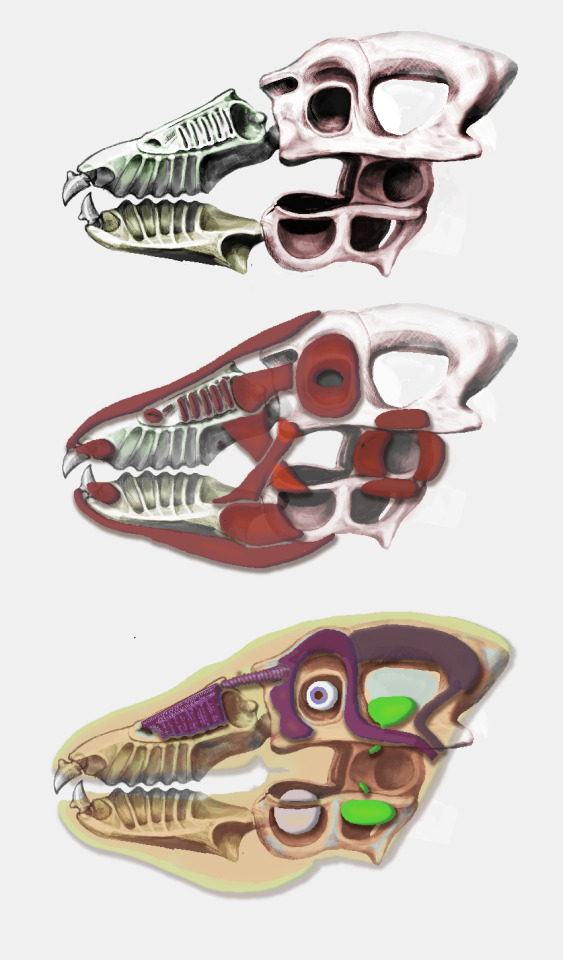

Also 3d variant:

"The skull of Cablesupplies is very different from the skulls of terrestrial vertebrates. Consisting of calcified chitin, it consists of almost identical upper and lower parts, two mandibles and thin pedipalps. Let's look at each of them separately.
The head consists of 4 plates, previously forming a carapace around the head. Each of them carries one eye socket and one large fenestra. The eyes at the top are fully functional, whereas the eyeballs at the bottom only help to swallow food, as is the case with terrestrial frogs. Also on the upper plates in front there are nasal passages leading air from the upper mandible to the lungs of the trunk. Moreover, the nasal passages do not intersect with the esophagus and mouth, which is why Cablesupply can eat and breathe at the same time.
In the middle, the plates are connected by bone tissue, in which there is a bed for tissues and joints of the pedipalps. Along the edge of the plate and the bed there are ridges, to which most of the muscles of the jaws, pedipalps and necks cling.
There is no usual mouth in front of the skull - just a simple hole. It is the bone-limited size of the pharynx and oral cavity that causes Sabre-bearers to chop their prey into small pieces with the help of oral appendages and middle limbs. However, Sablenos still have full lips. this allows them not to choke on water hunting and dig the ground without eating it.
The mandibles of the Cablesupply are made of pure chitin and have notches exactly in the center. Rows of notches can be either 1 or as many as 5. At the end of both mandibles there are special movable beak-like hooks, however, in many species it is either lost or replaces the mandibles themselves. There are several nostrils on the upper mandible - one is the main one, and the others are "corrugated" slits like gills, on which olfactory receptors are abundant. These gills can work in isolation from the main nasal passage, which is why they remain functional under water. Pedipalps help Cablesupply to push food into their mouths. They consist of 3 fragments, being modified plates, mandibles and hooks. In some species, pedipalps become claws, in others they become analogous to antennas or murderous weapons. This is the most mobile part of the skull of the Saber Bearers.
Since Cablesupply do not have a spine, their neck consists of 2 bones, similar in structure to a human arm. On top of the bone is the spinal cord and trachea, and along the bottom is the esophagus. The former are protected by a special capsule of connective tissue, a layer of adipose tissue, muscles (not shown) and an analog of osteoderms."
#art#illustration#artist on tumblr#small artist account#biology#speculative biology#xenobiology#speculative zoology#aliens#squid#anatomy
85 notes
·
View notes
Text
Dentition
Poll results:

Thank you to everyone who answered. I really appreciate it!
Let's get into it, shall we? With commentary. Okay, with the occasional mildly adult commentary.
Lower fangs 31% Assuming these are Hank’s “canine” or cuspid teeth, and assuming they’re only on his mandible, they’re going to be tusks. Possibly ever growing tusks. Maybe, in the case of swine, his upper cuspids rub against them and keep them 1) shorter +/- 2) sharpened. Maybe he files them to keep them shorter and smooth.
Either way, the presence of lower tusks is going to realign his lower jaw. When they’re present, they’re usually shown overlapping his upper lip. Here’s an excellent example. Several, in fact:
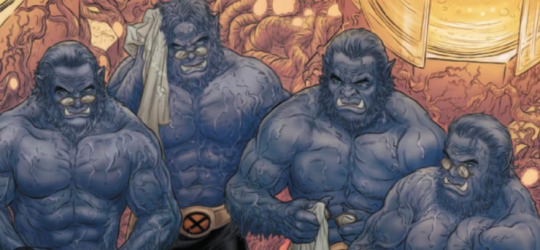
Supporting tusks of that size is going to also require some restructuring of musculature along his jaw, including up into his temple. Extra bone density too, if they’re going to stay solid. He typically has a beard or thick sideburns, so the increased heaviness of that lower jaw may not be visibly notable. But it could be felt if someone cupped his face! Of course, all the weight of extra bone and muscle to support his mandible means he’ll have increased temporalis muscles along the sides of his head as a counterweight. Again, hair on his head will help cover that. What’s all that mean? He’s going to have a hell of an underbite.

Quick and off topic side note: I added the above pic because I like it and because anyone who knows me fully knows:
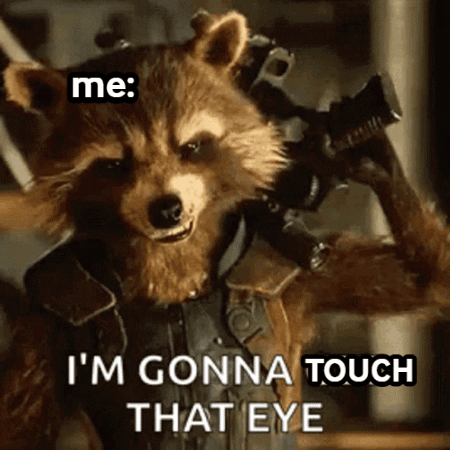
Maybe this is why Krakoa Beast is such disgusting guest at dinner? He didn’t forget or lose his table manners, he simply cannot eat without making a mess.
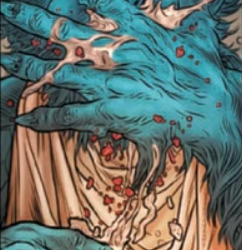
Final note on Hank having elongated lower cuspids. Those types of teeth are good for several things, but one of the best is defense. Sure, by strength alone he could literally tear you in two, but get those tusks anywhere near your frail, thin-skinned body when he’s ready to do some damage and you’ll be doing your best to keep precious organs that should never see the light of day inside your torso.
Recap: lower fangs, 10/10. A nod to Orc lovers.
Upper Fangs 12.1% Vampire Hank? Nah. Vampiric folklore doesn’t mention upper pointed cuspids, if they mention teeth at all. There are few animals that have only this type of tooth without a full set (we’ll get to that below), so this will have a little more conjecture.
There are some deer that have upper fangs, Chinese water deer (left) and Reeve’s muntjacs (right). Cute little fellows. While I’m interested in knowing if Hank has a tongue that can do that, I certainly hope he doesn’t have the scent glands that Reeve’s muntjac sports below its eyes.
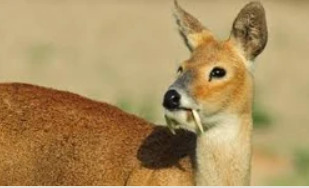
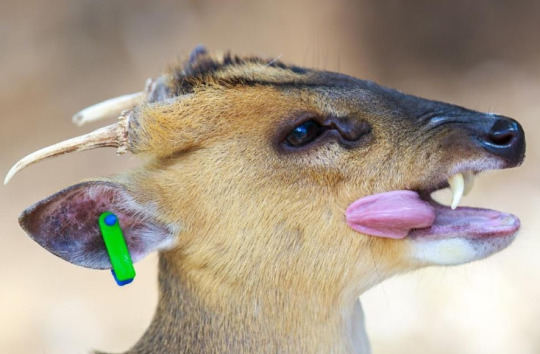
Other than that, there aren’t many other mammals that sport upper-only fangs. You’ve got to go back 8,000+ years to get to the most famous: the sabre-tooth cat or sabre-toothed tiger. Smilodon, if you’re nasty.
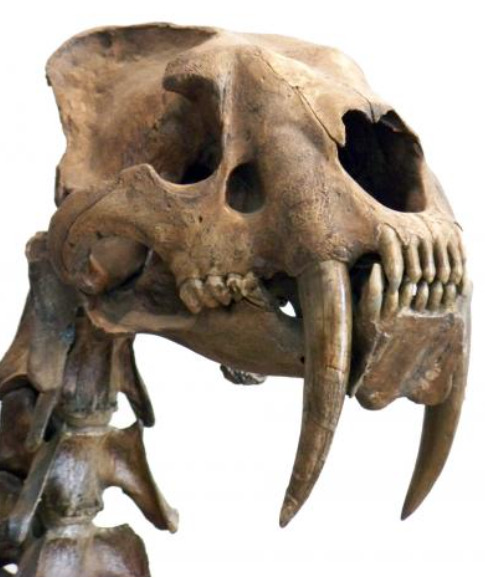
Obviously, Hank’s upper fangs aren’t nearly as impressive, although with the way he likes to monkey around with his own genetic code, I could imagine some variation has them . . . So long as they don’t protrude, he wouldn’t have to overtly worry about cutting his own lips, although that would be something to watch for. He also wouldn’t need additional bone to keep them from shifting. The maxilla has a bit more integrity to work with with than the mandible. No more muscle would be needed either; the entire weight of his skull could be used to jam those suckers into some(one)thing.
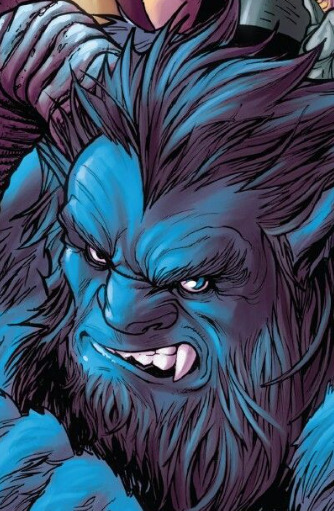

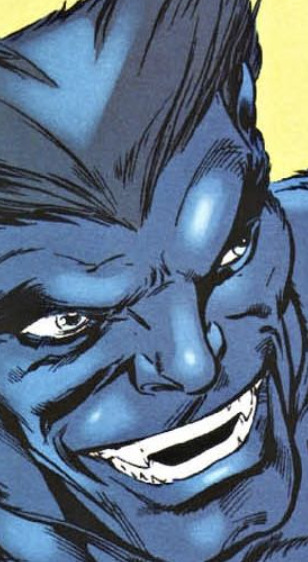
Recap: upper fangs, 10/10. A set for the vampire lovers.
Full set of fangs 55.2%
Woo boy. Now we’re talkin’. This is by far the favorite of fans and artists alike. Classic. Make biological sense. A full set is balanced.
Maybe the uppers are longer.
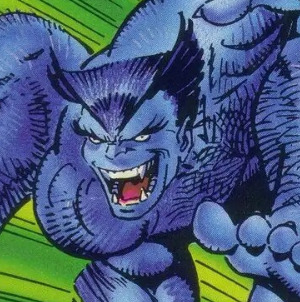
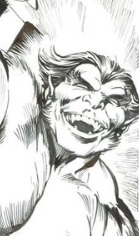
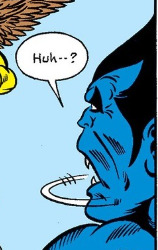
Maybe the lowers are bulkier.
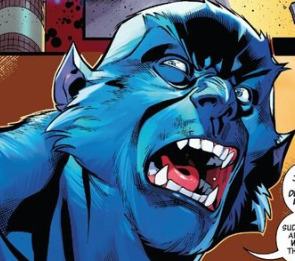
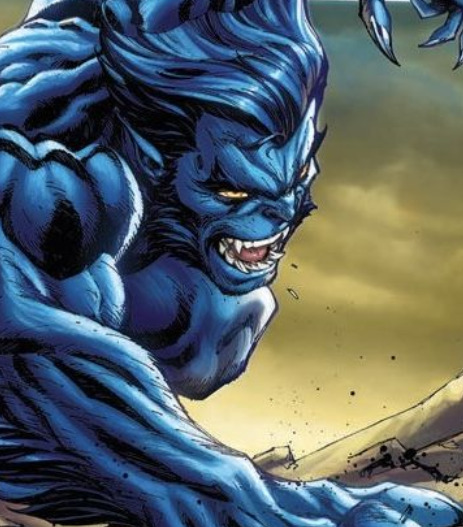
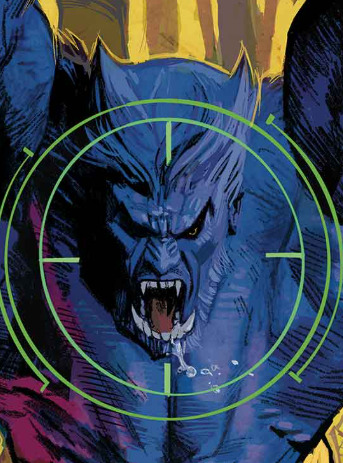
Maybe they’re even all around.

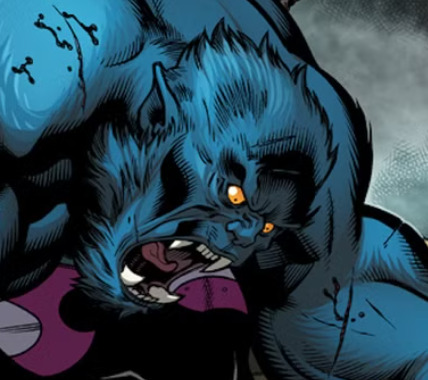
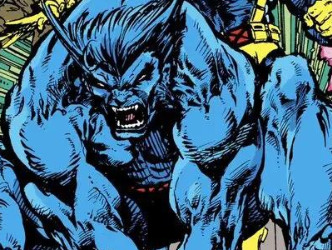
But in any of those cases, they’re mostly even and would provide the easiest way for Hank to talk, eat, and bite (if need be/if asked).
Question remains, however, how did they become fangs? When he threw OSHA rules set in place to prevent this sort of thing from happening and drank the chemicals to become grey and hairy, did his cuspids fall out and new ones grew in? Did his original teeth just . . . become longer? It’s the conundrum that divides the werewolf fan community too.
Recap: full set, 10/10, makes sense
Other 1.7% Here’s the miscellaneous category. Not gonna lie, Beast doesn’t have the same impact with fully human teeth. Looks a little creepy--with a caveat: unless he’s fully human. Although if there was an image inducer glitch that kept his fangs while the rest of him was a good-looking, corn-fed American guy, that’d be cool.
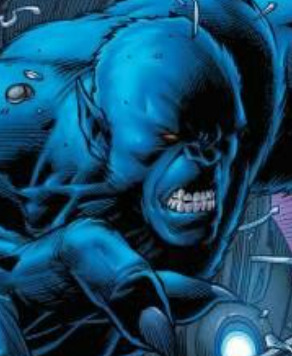
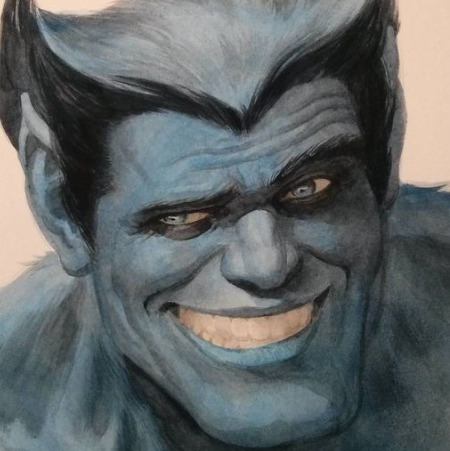
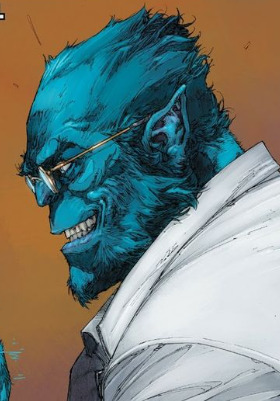
The exception to the rule is I like these even though he’s a lipless zombie:
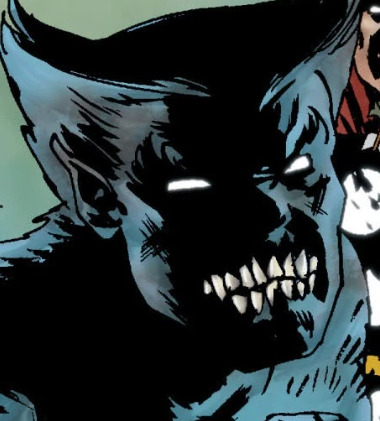
As for fully animal teeth to match a mostly animal Hank, that works. No notes.

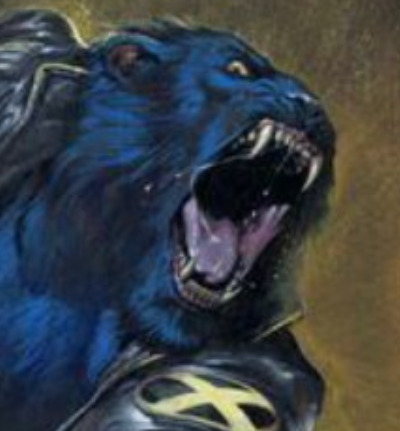
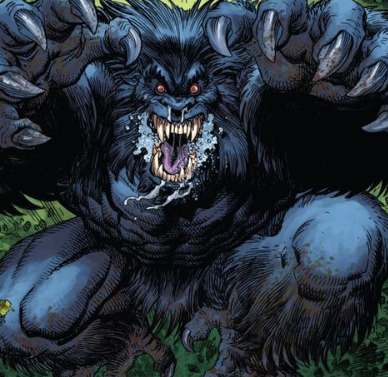
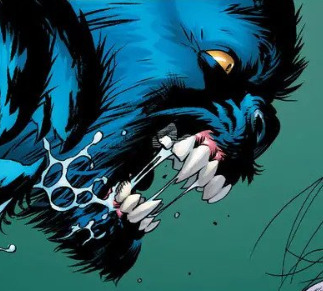
Recap: other, 5/10 (human teeth = 0, animal teeth = 10, hence the average)
If you stuck all the way to the end of these ramblings, thanks! I’d love to hear what you think. And if there are any other physical aspects of Hank McCoy that you’d like to see given the same treatment (and we’re all thinking the same one, don’t deny it, wink), or cats vs human physiology, let me know. 🙂
#hank mccoy#beast x men#beast xmen#teeth#ramblings#let's talk about comic book characters as if they're real m'kay?
22 notes
·
View notes
Text
Juxtaposed Snippet - Good Ol' Brawl
Suddenly, she’s startled by the unmistakable sound of glass shattering. A cold shock of liquid splashes across her back and her mind fills with terror.
The vivid sensation of heated agony engulfs her, spreading throughout her body as it soaks into the back of her shirt. The pungent smell of oozing—melting—flesh as Thresher Maw acid washes over her back, sinking through flesh and burning bone-deep. The horror of watching her entire squadron die painfully feels like she’s left them behind like breadcrumbs toward her own death.
She wants to scream but her voice abandons her so she clenches her jaw and clenches her eyes shut.
It takes all her strength to open her eyes and take in her surroundings to make sure she isn’t fleeing a monster of nightmares on Akuze.
She also isn’t alone.
Garrus is here.
Yet, Garrus is no longer by her side.
Just now realizing there’s a sound of struggling behind her, she spins to see that a fight has broken out between Garrus and the three men that had been harassing them.
More accurately, there are only two men in combat with Garrus.
One of the goons has collapsed to the ground and holds his bloody nose, face screwed up in pain. The others are slow from their heavy drinking and as one throws a punch, Garrus easily sidesteps and knees the man in the stomach. The creep stumbles back, tripping over his friend and falling.
That leaves the initial harasser who tries jumping up onto Garrus’ back and reaching around his head. No doubt, the asshole is going for Garrus’ mandibles because that’s been rumored to be a really sensitive and painful area to harm.
He can’t quite make it around Garrus’ cowl and instead, punches the back of Garrus’ head.
That only seems to piss Garrus off more and he snarls, grabbing a leg and trying to get purchase on Garrus' hips and waist. With one smooth move, Garrus ducks to the side, lowering his head and using his weight and momentum to yank the man off his back.
The man hits the ground with a loud crack. The only thing letting them know he’s alive is his groaning as he cups the back of his head.
That doesn’t stop them completely, though, as the two previously incapacitated men have gotten to their feet.
The elbowed one slowly approaches, hesitant and trying to calculate how best to attack. The second, broken nose man is carrying a broken bottle, coming from behind and Jane knows that enough is enough.
Fuck this shit.
As the bottle holding one charges at Garrus’ back with his weapon low and aiming for Garrus’ lower torso, Jane runs into the action. She comes in from the side, throwing a jab straight into his broken nose, further shattering it.
This gives Garrus the chance to take on his attacker.
“Fuck!” the man she punched curses, dropping his bottle and turning to her. “You fucking bitch!” He tries to punch her but she quickly ducks and jabs him in the stomach.
That gets him on the floor with a loud thud.
The only man left staggers in a rush. He goes for her but he has to get past Garrus first.
Garrus doesn’t take the threat to her very kindly.
Instead, he grabs the man’s shirt and lifts him off the ground. He growls, scowling as he uses his free hand to punch the man in the man in the stomach once more. When the man yowls in pain, Garrus drops him to the ground.
None of them get back up, perhaps not wanting to continue this losing fight.
“Hey,” she says, walking to Garrus and taking his hand to get his attention. “Let’s get out of here before Security shows up.”
He sighs and lowers his head. “Yeah. Let’s go.”
#mass effect#mass effect au#garrus vakarian#shakarian#parable#female shepard#femshep x garrus#juxtaposed#custom femshep
10 notes
·
View notes
Text




Creature design is one of my favorite art exercises.
Anyway, lol, have this guy. I don’t know what he is or what his name is, but he exists now. Him and all the unnecessarily detailed information I created about him. First draft anyway.
The idea was for him to be mammal-like, but avian-accented. He has exposed bone on his forelegs, lower ribcage, skull and lower spine. His diaphragm acts like a layer of skin, not only keeping his guts from spilling out everywhere lol, but as protective casing (skin) also. When he breathes, you can actually see that layer lift up from his ribs slightly. The feathers don’t serve much purpose except to cover his joints and parts of vital organs (heart/lungs) and spinal cord.
His stomach is placed lower than most of his organs, just below his costal arch, for him to be able to eat his fill and not press against the ribs almost at all. Note that his head is quite small compared to the rest of his body. He pulls and tears at food, similar to a vulture, but needs to chew before swallowing. This makes eating a long and taxing process. To make up for this, he can eat ridiculous quantities of food and digest it over a long period of time, storing excess for when it’s ready to be used. He’s typically a fasting creature, eating only three or four times every month, unless food is scarce.
He has a three-part jaw system, split in the middle of the mandible, set with omnivorous teeth. This helps him tear the flesh from large meals, though makes his necessity to chew a bit complex. His maxilla is hooked and beak-like, while still being wide enough to hold two sets of teeth on the top. He can tear with one set or grind with the other, or if the food is tough enough, lower a blade-like shield over those sets to sever and cut ligaments or bone without damaging his teeth. This shield also acts as his foremost offensive weapon against predators.
Though omnivorous, he finds it difficult to find a big enough meal of fruit and vegetables to satisfy his near-constant cravings. Instead he scavenges roots or fruit in between hunting.
Like avian species, he preens his feathers regularly, smoothing and oiling them with the collected fats from his latest meal. He constantly sheds and regrows feathers, often leaving behind small piles of multicolored plumage in his den or preferred resting spots. Color of feathers can vary by season/location or his condition of health: cream or grey in winter, moss green or mold grey in spring, warm brown or grey-brown in summer, warm gold/orange or sickly yellow in fall. He typically eats a hefty final meal before sleeping through most of winter, as the color of his plumage makes difficult camouflage for hunting until the spring pigment comes in.
Typically dwelling in marshes or rainforests, he is four meters (about thirteen feet) tall. His eyes are pink-gold, and sunken into his head, making anything but limited monocular vision almost impossible. He is practically blind directly in front and behind him, but makes up for this with a strong sense of smell and hearing.
While his vocal cords are not unlike humanoid design, he has never made effort to learn language besides animalistic body language.
He is, in fact, sentient, but doesn’t care for much company or interaction with other sentient species. Being reclusive in his mannerisms, he keeps to himself and defends a small territory around his den or nest, before moving on to another area as a perpetual nomad.
#creature design#eldritch#eldrich horror#cryptid#my art#my art <3#my artwork#cryptid design#creature#art#pen and paper#lineart#monster#monster design#art exercise#design#character design#my monster#my creature#my creations#i needed this#bloodborne#elden ring#dark souls#dark souls aesthetic#inspired by bloodborne#lovecraftian#horror art#monster art#creature art
8 notes
·
View notes
Note
Has anyone mentioned my beloved the jaw bone yet?
Its simply the best bone. The lower jaw (mandible) gives support to the whole bottom row of TEETH. (Also my beloved) And is able to provide the shape of the lower face and chin!!! (Both very grabable and loveable in their own ways)
The lower jaw is what allows the mouth to open and close! (No blowjobs/oral without it!!!)
(Unhinged asks, guess who /silly)

14 notes
·
View notes
Text
Baru: The Cleaver-Headed Crocodile
Ok back on my croc stuff, today discussing Baru. Like most the other crocs I've been talking about, Baru was a mekosuchine, a member of an endemic radiation of crocodilian native to Australasia. Baru is easily among the largest of this group and among the most robust, with massive curved teeth and almost inflated looking jaws. Left my interpretation of Baru darrowi, right the illustration by Willis et al. from 1990.
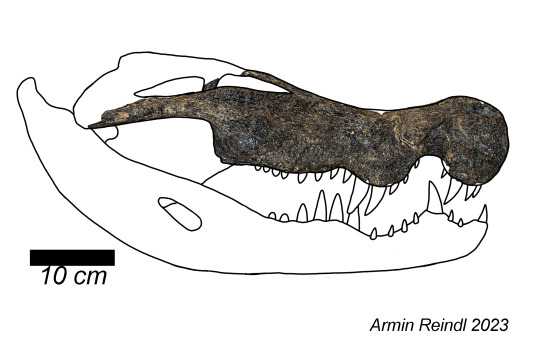

My reconstruction differs subtly in some regards, obviously the jaw material shown is from Ristevski et al. 2023 and elements of the posterior skull are based on the older Baru wickeni. My mandible also turned out slightly different, tho the quality of the images in the original description is not great so that is not guaranteed.
Anyhow, this head likely sat atop the body of what was a decently large crocodilian, with estimates suggesting four or even five meters in length for both currently recognized species Baru wickeni and Baru darrowi. As you can see below, I went for the lower estimate (which is the one given by proper publications), which still renders an immense animal all things considered, certainly holding up with many crocs of today.

Currently, there's two recognized species, one unnamed species and one that has been reassigned. The older of the named species is Baru wickeni, which was found in the Lake Eyre Basin and Riversleigh World Heritage Area during the late Oligocene. Like I already said, it was approximately as large and robust as the later Baru darrowi, but did differ in some regards. The skull had much more prominent crests, the nasal bone extended into the opening for the nares and importantly, the cutting edges of the teeth were smooth.
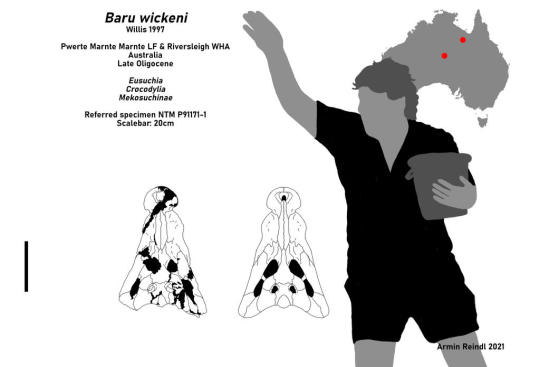
During the Miocene, Baru wickeni would be replaced by Baru darrowi, known from younger strata of the Riversleigh and the Bullock Creek fauna. Baru darrowi had less prominent crests, but in turn slight serrations on its teeth. Also the nasal bones did not extend into the nares. Baru darrowi is the species shown at the start.
The other two are then the unnamed Baru species from the Alcoota fossil site and "Baru" huberi. I talked about the latter before and how it is now thought to be something else entirely. Which leaves us with the Alcoota form. Generally regarded as a distinct species, fossils of the Alcoota Baru have been found from 2000 onwards near Alice Springs and appear to represent an animal more robust than the other known Baru. Below you can see a skeletal mount on exhibition at the Megafauna Central in Alice Springs (image by Aussie Bucket List) and a skull held by Adam Yates, an important researcher of this animal.
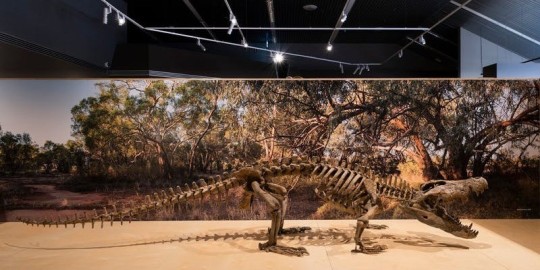
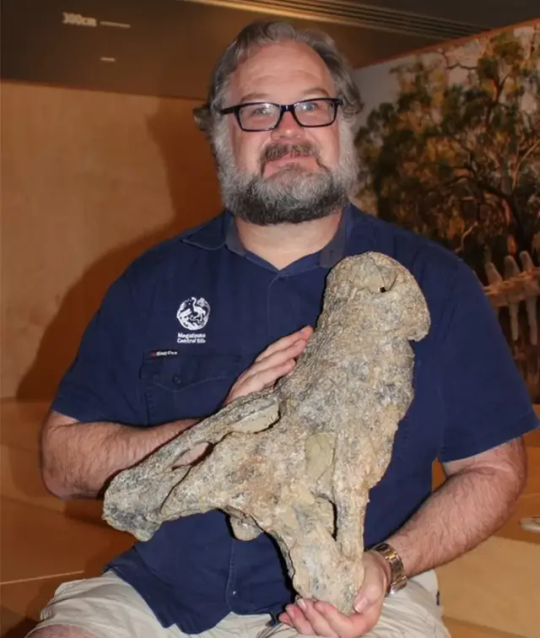
A little side note I want to mention is the name Baru. As you might have guessed from the etymology of various other mekosuchines (Kambara, Mekosuchus, Quinkana, Kalthifrons), the name actually ties into the native People of Australia. Specifically, Baru is a figure in the mythology of the East Arnhem Region, which describes him as a sort of totem crocodile that brought law to the lands he named. Baru also had a fight with Jarkitj (Willy Wagtail) after stealing fire for himself. Sadly I couldn't find much about the mythical Baru beyond a brief summary written up by George Pascoe Gaymarani you can read here.
Returning to the animal, one would suspect that the robust skull meant that it didn't quite hunt like modern crocodiles, especially considering the serrated teeth found in the younger species. Well, tho nothing concrete is known Willis and colleagues speculate that this might have been an adaptation to shallower waters. While modern crocs tend to ambush prey, grab it using a strong bite and conical teeth and then proceed to drown it, Baru may not have had that option. A modern croc can just drag a zebra for instance into deep water, weaken it and let go to adjust its grip without the risk of it getting away. In shallow waters, this may have been too risky and lead to prey escaping. So Baru's robust head and curved, sometimes serrated teeth were built to inflict a lot of damage upon prey when lunging, securing the bite and incapacitating it. Willis estimates that it may have taken prey as heavy as 300 kilos.
There's also the interesting tidbit of Baru wickeni coexisting with a diverse croc fauna, yet being conspicuously absent from more southern regions of Australia despite entering the respective drainage basin. I go into more detail while talking about Australosuchus, but the jist of it is that Baru was likely not as cold resistant as Australosuchus and thus not found as far north.
Alas, as with other mekosuchines, not much art of Baru exists aside from this absolutely fantastic piece by @knuppitalism-with-ue
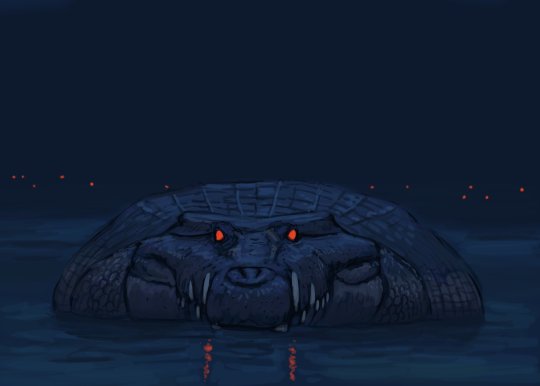
As per usual, this deep dive is brought to you as part of me redoing the wikipedia page of this genus, which resulted in a major size increase. The image below is just to show the difference, but if you want to read it here's the link: Baru - Wikipedia
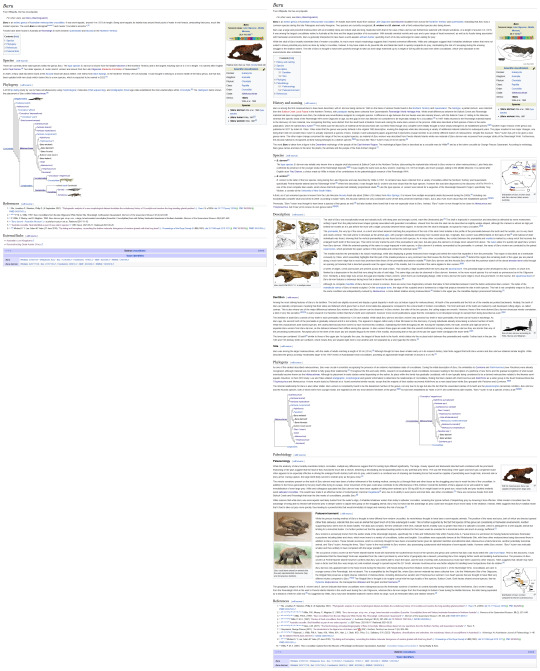
#mekosuchinae#wikipedia editing#wikipedia#baru#baru wickeni#baru darrowi#baru huberi#croc#crocodile#paleontology#palaeoblr#prehistory#oligocene#miocene#australia#long post
115 notes
·
View notes
Text
Spec Evo Vault, Gourmand
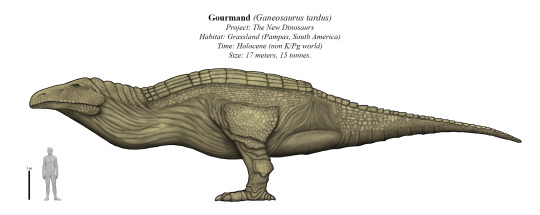
In the world of "The New Dinosaurs", Tyrannosaurs in general managed to stay for a while as the dominant predatory "Carnosaurs" in the north regions until they slowly were replaced, but on the Neotropical regions (South America) of earth, on the grasslands of the far south, a relict survived from a branch that split out and leaked through a early land bridge across the continent around 55 million years ago.
From there the Gourmand evolved, it followed the trend of larger, even heavier big head tyrannosaurs, which lost their arms in the totality of the structure, neither atrophied bones of the shoulder girdle remained, meanwhile its legs and pelvis have adjusted to hold the even more massive body, as it not longer possess the tall more gracile bulk form that helped it to maintain a long distance gape, but a very robust and short leg form that allows it to sustain and balance the elongated form.
The early account of this titanic theropod remark that due to their massive size they Gourmand is incapable to hunt down large prey so they rely on feed on dead carcasses an digest them in long periods of time resting in the grass, having its long armor that protect it against any other predatos.
Is capable to unhinge the mandibles being capable to gobble up any potential meal, which for the lack of any shoulder bone it allows it to properly take large prey like a deep water fish.

In the manga though, from what I have hear (haven't been able to see the content for myself) there is the reference the Gourmand actually being more active and responsive towards any other predator capable to take down Cutlasstooth like in the cover, unlike the implication of the original book which depicted it as a very slow creature.

Comments and notes -I guess is interesting how this almost looks like a idealization of the "Scavenger tyrannosaur" hypothesis that have been existing for a century and went more popular around paleocircles in the late 90s and early 2000s for Horner, is not like Dixon was defending this idea maybe more like it was considered plausible if theropods became even bigger they would become slower animals that couldn't hunt its prey but go for an easy meal like a corpse, and so, depend more of scavenging.
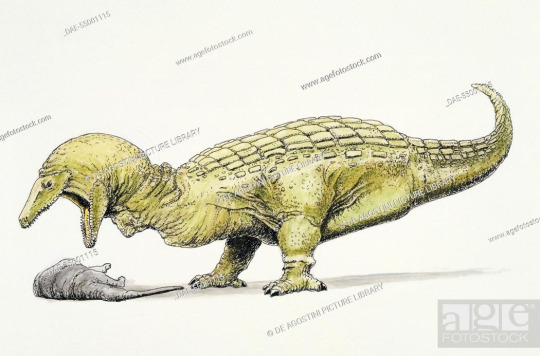
-The way his jaw disarticulates from the skull always seemed strange to me, almost as if the jaw doesn't have an extra bone that allows it to extend, sort of like a quadrate snake that offers that extension, it just falls off and is hold by pure muscle. As well for a group characterized for the lowest kinetic skulls ever, would be odd they reverse this specialization only to become gobblers, would be likely a strong mandible could offer more opportunities to consume a prey. Even with the chance a tyrannosaur skull could become more kinetic, it likely would depend on expand the jaw structure around without detaching the lower jaw, like is inferred some theropods would have do, and specifically how it was found in spinosaurs.
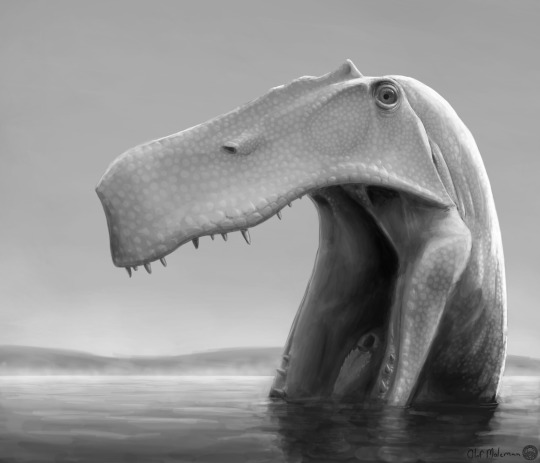
-I think is interesting there might be more tyrannosaurs living in the new dinosaurs book with a mildly success, the gourmand is the only described species of the group and for the the width of the lineage in the table it really imply they are doing something decent with the number of species, where exactly are living is unknown
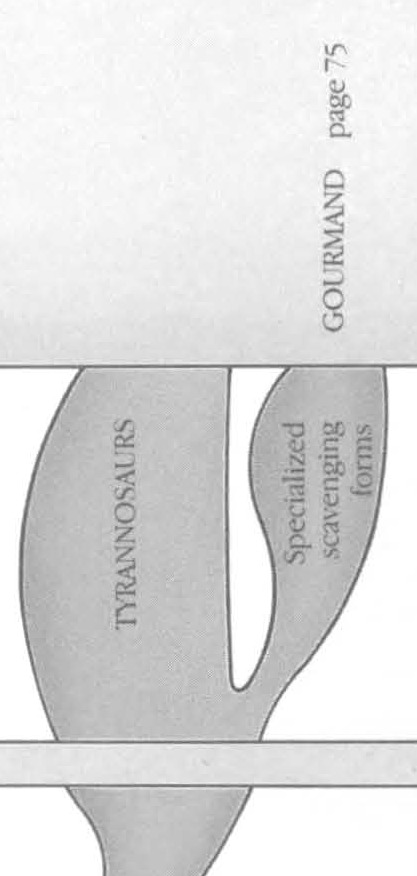
75 notes
·
View notes
Text
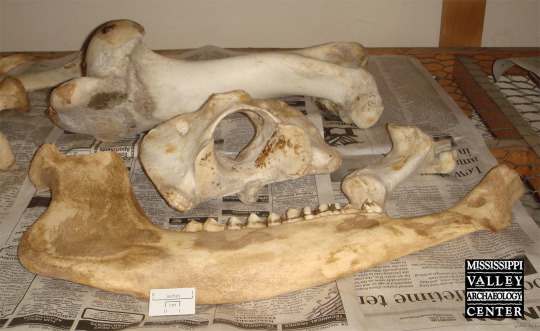
MVAC is better equipped to identify archaeological bison bones, thanks to a generous donation from long-time MVAC friend Dan Maas, who raises bison. Dan gave us a bison that died unexpectedly, as well as some additional bones. Modern comparative materials are important for accurately identifying archaeological bones. We'll be processing these bison bones and adding them to our comparative collection. Bones pictured: front, right mandible (lower jaw); center, atlas vertebra; right center, right calcaneus from lower rear leg; background, left humerus from upper front leg.
Video with more information about comparative/reference collections.
youtube
15 notes
·
View notes
Text
WEIRD dream about having, for some reason, a reservation at a fancy restaurant. I went into the building looking like a necromorph and - even worse lol - wearing the same clothes I wear to work.
I passed a waiter on the way in (weird layout, you had to walk through part of the restaurant to get to the... what's it called? The front desk thing where you check in.) And the place was totally deserted, nobody eating or anything.
The waiter was friendly, treated me like normal and told me where to check in, but then when I got there, the... restaurant terminology for guy who takes you to the table and all that. Looked at like a snooty cartoon butler, nose so up in the air it looked like it was trying to migrate to the top of his head. Looked like he couldn't believe my audacity for existing at all, much less inside HIS RESTAURANT
And I did feel out of place, I'd felt out of place already, but... also getting annoyed, since. I don't really own any "nice" clothes but I could get some and I wouldn't be opposed to changing. (again: lol I also looked like an exoskeletal necromorph basically lol) But also the restaurant was totally empty. I wouldn't have been bothering anyone. The waiter already acted like I was perfectly fine.
And I had a reservation.
But the guy wasn't having it and at that point I was more annoyed that he was treating me with only disgust instead of even being afraid of me, like that was a level of disrespect too far lol
I'm underdressed for a nice restaurant, yes alright reasonable understandable. I'm an undead abomination in a nice restaurant and you find this unpleasant, also understandable. But you're not even gonna acknowledge that there are extra limbs with huge bone scythes sticking out from under my shoulder blades and my lower jaw has been split in two to form independently moving stabby mandibles and there's the rear end of a centipede growing out my spine as a tail and sir I could eat you instead of your fancy restaurant food if I wanted to, you could at least acknowledge that
Instead of just eating him there though (I think I didn't want to freak out the waiter who'd been nice - or, hell, make him have to deal with surprise human corpse) I exited the restaurant to lurk around in the vicinity and get him when he left. The restaurant was attached to sort of a shabby and also very deserted shopping mall, sorta felt like that highlighted how ridiculous snooty guy was being. Unfortunately though I woke up before I could get vengeance (and food)
Even though the haircut went fine and no one treated me like I was anything out of the ordinary or anything like that, I think the dream was still related to that event, just because I do always sorta feel like going into any public building during the day, like I am inherently a contamination. ...AND because the haircut place had a layout where you had to walk past people getting haircuts to get to the front desk.
It was the first coherent dream I've had in a while though so I'm not gonna give my subconscious too much shit for being uncreative hah
4 notes
·
View notes
Text
Say hello to an ancestoress
More than 4,000 years ago, a young woman who died in what is now Scotland was buried in a crouched position within a stone-lined grave. She remained buried for millennia, until excavators at a stone quarry unexpectedly unearthed her bones in 1997.
Little is known about the woman — dubbed Upper Largie Woman after the Upper Largie Quarry — but now, a new bust-like reconstruction reveals how she may have looked during the Early Bronze Age.
The reconstruction, which went on display Sept. 3 at the Kilmartin Museum in Scotland, shows a young woman with dark braided hair who is wearing a deer-skin outfit. And she appears to be looking at someone nearby.
"Making a reconstruction I usually think that we are looking into their world, [meaning] they don't see us," Oscar Nilsson, a forensic artist based in Sweden who crafted the woman's likeness, told Live Science in an email. "I thought it could be an interesting idea to twist this a bit, and actually thinking that she can see us. And as you can see, she looks a bit critical to us (I don't blame her for that...)!"
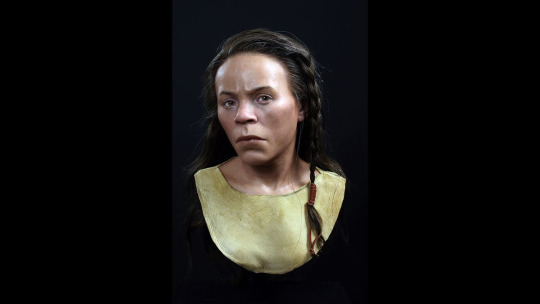
Upper Largie woman, who died in her 20s, lived during the early Bronze Age of Scotland. (Image credit: Oscar Nilsson)
After the discovery of Upper Largie Woman, a skeletal and dental analysis revealed that she likely died in her 20s and experienced periods of illness or malnutrition. Radiocarbon dating found that she lived between 1500 B.C. and 2200 B.C., during the Early Bronze Age, according to the museum. Meanwhile, a look at different isotopes, or versions of strontium and oxygen from her remains suggested that she grew up locally in Scotland, but the team wasn't able to extract her DNA, so her ethnic heritage, including her skin, eye and hair color, is unknown.
However, archaeologists found sherds of Beaker pottery in her grave, hinting that she was part of the Beaker culture, named for its peoples' bell-shaped beakers. Research suggests that the Beaker culture started in Central Europe with people whose ancestors came from the Eurasian Steppe. Eventually, the Beaker culture reached Britain in about 2400 B.C. DNA evidence indicates that the Beaker culture replaced most of Britain's inhabitants, including the Neolithic communities that had built monuments such as Stonehenge.
"The carbon dating suggests she might be a descendant of the first Beaker newcomers," Sharon Webb, director and curator of Kilmartin Museum, told Live Science in an email.
For the reconstruction of Upper Largie Woman, her skull was CT (computed tomography) scanned and then 3D printed in Scotland. However, "she lacked her mandible [lower jaw], and her left side of the cranium was in a quite fragmented condition," Nilsson said. "So, the first thing I had to do was to rebuild the left side of her cranium. And then to create a mandible, a rather speculative issue of course."
Then, Nilsson took her age, sex, weight and ethnicity into account, as these factors help determine tissue thickness. "So, in this case: a woman, about 20-30 years of age, signs of undernourishment in a period of her life, and a probable origin from the region," he said.
Nilsson pulled from a chart of modern individuals who fit these characteristics, then used their tissue measurements to begin sculpting the reconstruction. Pegs placed on the replica skull helped him measure the tissue depth, which he then covered with plasticine clay as he molded the facial muscles. Based on her skull's contours, he noted that Upper Largie Woman's eyes were wide set and that her nose was broad and "probably a bit turned upwards." She also had a rounded forehead and a broad mouth.
"I found it interesting that once she was reconstructed, I did not see that much of her malnutrition," Nilsson said. "She had a very rounded facial skeleton, which helped her looking a bit more healthy than she may have been."
However, he was clear that "the colors were all qualified guesses, based on other burials from the time and the region, where the DNA was in better shape than this one."
Webb called the reconstruction "absolutely amazing, we wanted her expression to be asking questions of the visitor, wondering who they are, and what their lives were like so that visitors might also ponder her life."
Upper Largie Woman's remains are now "sensitively 'reburied'" in the same position and orientation she was likely buried in 4,000 years ago, Webb said. Visitors can see her reconstruction at the museum's permanent exhibit.
#Women in history#scotland#Upper largie Woman#Kilmartin Museum#I don't blame her either#Oscar Nilsson#Early Bronze Age#Beaker culture
19 notes
·
View notes
Note
((Wait, are you telling me that real life snakes don’t detach their jaws?))
[they do not! here is a photograph of a snake skull from wikipedia:

as you can see, the lower mandible is not connected by bone- there’s a ligament there instead- and there’s a bone there in the back called i believe a quadrate bone. these allow the skull to stretch enough to eat large prey items. it’s common to call this act unhinging, but it actually never dislocates at all!]
20 notes
·
View notes
Text

Sakchai – the creepy crawly
—- sak [ Power, Honour ] + chai [ Victory ]
—- scolopendra dawydoffi, Giant Centipede
—- Poisonous bite
—- 177 Segments & Legs
—- Trunk Length
—- 12 ft
Beneath his ears connected to his nape are two antennae,that rest over his shoulders.
They connect to his cervical brain-stem, thus much like fingers - this area controls the antennae movement and sensory detection.
Both are VIBRANT ( blood orange ) and even in length of 7.5 foot, they aid him in feeling vibrations, moisture and heat in the surrounding areas as his body is rather numb by such thermal changes due to how thick his exoskeleton is.
These antennae may seem sensitive and fragile, but they are actually just as deadly as himself. They are sharp tipped, covered in a thinner layer of segmented exoskeleton but are still able to crush tree trunk and even easier body parts of prey is he swings them with velocity.

Human torso is pallid on the underbelly, but the entirety of his back is coloured in an orangey-brown murky exo.
Humanoid hips are covered in this exo, dots of the shell climb up the sides of ribs and around abs, over sides of breast tissue, over collar bones and all around his neck to lower jaw.
Hands and fingers are sharp like his antennae, glands under the subtle curve of middle finger claws weep his toxin into his prey along with his poisonous bite.
Has two arms!
Has several grown bug limbs underneath those, the longest extending from where human hip bones protrude.
They are sleek and pretty useless, but they look good.
Educated?
No.
Instinctual and often steals meals from bigger and more dangerous predators since he can overpower them easily.
Skin tones
Heavy tan, natural Asian darkness to skin.
Sun heavy living thus darker than most Farmers or Travellers in the Jungle he inhabits.
Poor eye-sight but extreme sensitivity to movement / heat of the body.
Jaws are humanoid at first but when consuming, Mandibles easily break apart the lower jaw into horizontal jowls to crush and chew his meals.
Language; Bug & Screaming
4 notes
·
View notes
Note
The character names are so goofy I love them! Which character is your favorite? Do you have a basic description of what the plot would be yet?ahhh I’m sorry I love asking questions about your story for some reason lol!!!! I’m so intrigued now
-envy

Don’t be sorry I love to share about them!!!!
I don’t necessarily have a favorite but the one I’ve put the most effort into currently is Centimillipeed! He’s my little guy!!
The general plot I’m just gonna boil down hehe. It’s just what I imagine what would actually happen if people in the real world had superpowers/were mutants. Not a single person is innocent nor morally in the right. It’s really just me seeing how morally grey people can truly be and so on and so forth.
Anyway, here’s a small list of what some of them look like! (not all of them are fully developed & only a few I’ve drawn out lol)
Blossoms is a taller white female with brunette hair. She is missing skin, so her entire midsection is bone, her thighs are bone, her fingers are bone, and her neck and lower jaw are bone. Out of the bone grow wild flowers of every type. She’s mute, and rather slow (in movement), but intelligent.
Skinship is a shorter male with tanned skin. His hair is blonde and he generally dresses in an effeminate manner. His ability allows him to “unzip” or “peel” back the layers of people or things, so his favorite outfit is a nice skirt with some cute thighs highs and slip on shoes while he wears his skin and muscular system as a nice off the shoulder coat! He’s actually dating Blossoms, no matter how gay he seems :)
Wick is a mid sized black male with a hanging-esk lamppost protruding from his spine. His “head” is the lamp itself, which burns with purple fire with multiple wicks flowing out the back like hair
Centimillipeed is difficult to explain. He himself is a young looking white male with thick, deep black hair. Out the top are two cowlicks that resemble antennas. His teeth are sharp and he has mandibles inside his mouth. At the mid thigh, he cuts off and the decapitated body of his mother begins. He is sown onto her shoulders, nerves connected so he can move her limbs. Then his mothers body is attached to his fathers body in the same way, and so on and so forth. He’s a… long boi, so to speak.
Spiders Nest is a shorter boy with patchwork skin mixed with cloth. He appears younger with stitches running throughout his body. His hands are extremely large and stuffed toy-like. He’s a little guy who’s filled with bugs, corvid’s and things of that nature!
Eyeball is a tall but thin Brit woman who, at this point in time, has lost her all her limbs - including head - so she only has one of her eyes as a head. Don’t worry, it’s blown up to insane proportions!
I think that’s good enough for now, but just to really take a dig at the plot real quick, it is what I said before. The main thing is that they’ve been “kidnapped” and taken to a facility for testing. Not a single person here is a good person. Everyone, including the “good guys” have committed some kind of atrocity. It’s a morality test. Who do you side with?~
Anyway, feel free to send more questions! I will say this (if you couldn’t tell from just these comments lmao), it is a darker story! So this dives into some darker things, be cautioned! Thank you for asking, feels good to start talking about my babies-

8 notes
·
View notes
Text
Ok so the fuckin
Design of this zombie my brain came up with, is like. Base body of a Screamer from State of Decay. No arms, no mouth, chest torn open or whatever.
But here's where it diverges from the Screamer, its ribcage is what tore open from the body itself, the largest bone from the ribcage made itself into a sort of 'lower jaw' or mandibles like an insect and the rest of the bones on the ribcage acted as its teeth.
It is slow, of course, slow turn radius the like. But that doesn't stop the fact that when it bites it's gonna tear through shit because these bones aren't weak shit they're actually really strong and thick as fuck.
I also told this info to my dad and he said it sounds like a Resident Evil thing.
I haven't played Resident Evil in my life and the last time I watched one of the movies was years ago.
Send help.
3 notes
·
View notes